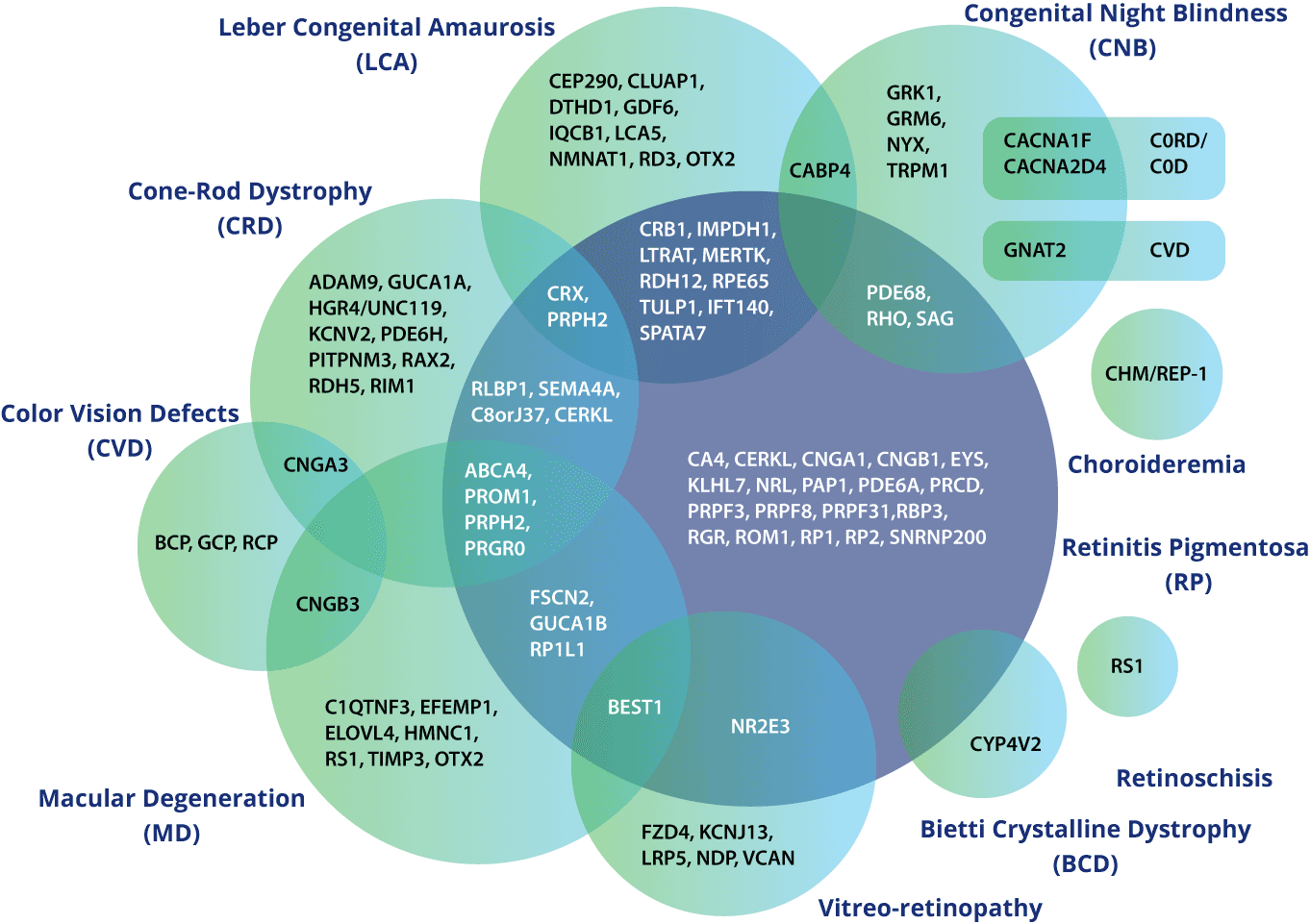| Retinitis pigmentosa (RP) |
Main symptoms and characteristics
- Difficulty seeingin dim light
- Difficulty moving between light and dark
- Gradual loss of peripheral vision in both eyes
|
Age at onset
- Onset and speed of progression vary greatly
- Can be diagnosed in infants or at later ages
|
Incidence
1/3,000 -1/7,000 |
Type of mutation
Multiple different forms, can be autosomal dominant (30-40%), autosomal recessive (50-60%) and X-linked(5-15%) . |
| Usher syndrome 10 |
Main symptoms and characteristics
- Hearing loss (at an early age)
- Night blindness (nyctalopia) and poor peripheral vision or tunnel vision
- Problems with balance
- Exists as three clinical types (Type 1, Type 2, and Type 3) depending on severity and symptoms
|
Age at onset
- Usher syndrome affects around 1 in 10,000 people, either male or female, and is usually diagnosed early in life.
|
Incidence
1/10,000 |
Type of mutation
Autosomal recessive. |
| Leber congenital amaurosis (LCA) |
Main symptoms and characteristics
- Inability to focus or nystagmus (involuntary jerky eye movements)
- Photophobia (sensitivity to light)
- Slow pupil response to light
- Pressing or rubbing the eyes
|
Age at onset
- LCA is a rare form of IRD that affects around 1 in 33,000 to 1 in 50,000 people and is usually diagnosed a few weeks or months after birth.
|
Incidence
1/33,000-1/50,000 |
Type of mutation
Usually autosomal recessive, but can sometimes be autosomal dominant. |
| Stargardt disease |
Main symptoms and characteristics
- Difficulty seeing fine details or distance
- Black, hazy , or wispy spots in central vision
- Slow adjustment to bright or low light
|
Age at onset
- Stargardt disease is the most common form of inherited juvenile macular degeneration and affects around 1in 10,000 people. It is usually diagnosed in childhood or in teenagers.
|
Incidence
1/10,000 |
Type of mutation
Usually autosomal recessive, but can sometimes be autosomal dominant. |
| Bietti Crystalline Dystrophy (BCD) |
Main symptoms and characteristics
- Progressive loss of peripheral visual acuity and night blindness
- Deposition of yellow-white crystals in the retina and sometimes the cornea, degeneration of the retina, and sclerosis of the choroidal vessels
|
Age at onset
- usually in young adults, around 20-30 years old. Some milder forms may onset at a later age.
|
Incidence
more frequent in East Asia (around 1/35,000- 1/50,000) |
Type of mutation
inherited in an autosomal recessive manner with disease-causing variants in the CYP4V2 gene. |



